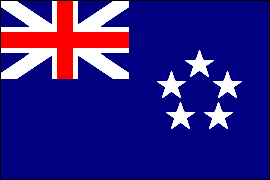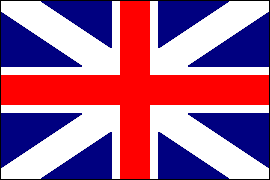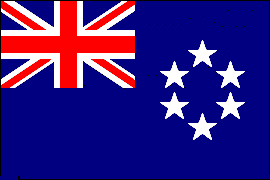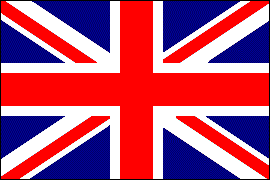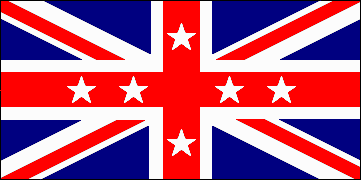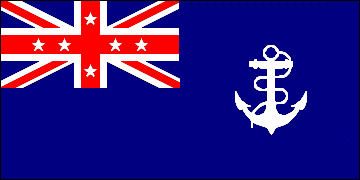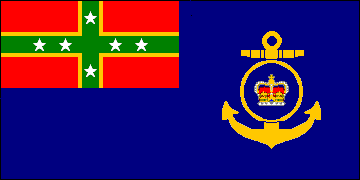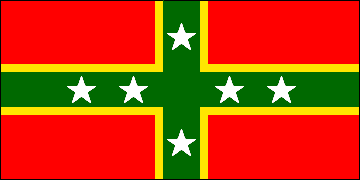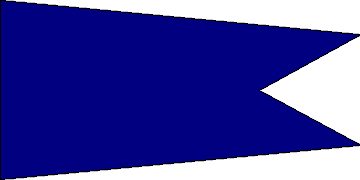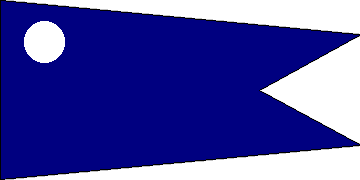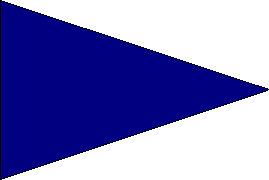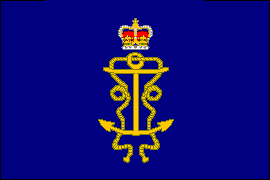|
|
|
|
Robert
Sobel's celebrated venture into alternate history postulated a
British victory at the Battle of Saratoga (1777) and the subsequent
collapse of the American bid for independence. Instead the colonies
were reorganized into a Confederation of North America with
substantial autonomy. Somewhat like Canada in reality, the CNA
gradually developed into a fully independent nation while retaining
its link to the Crown. Meanwhile, disaffected partisans of the lost
Patriot cause quit British North America and trekked west,
eventually to settle in the region we know as Texas and that they
named Jefferson. This remote settlement became the kernel of another
great nation: the United States of Mexico (Estados Unidos de
Mexico). For Want of a Nail chronicles the birth and development of
the CNA and the USM and the long-running conflict between them. On this page are depicted my designs for ensigns, jacks and
flags of the Royal Confederation Navy. |
|
|
The first naval flags of the CNA were essentially British: a Blue Ensign with a canton of the Union Jack, and the UJ itself as the jack. In the fly of the ensign were five white stars symbolizing the constituent states of the Confederation. In 1801 the revised UJ (with the diagonal Cross of St. Patrick) replaced the earlier version, and in 1810 a sixth star was added for the new state of Vandalia. The commissioning pennant was the Royal Navy's blue pennant with the Cross of St. George at the hoist. Flag officers flew a plain blue flag, exact rank being indicated by the mast from which it was flown: at the main for an admiral, at the fore for a vice-admiral and at the mizzen for a rear-admiral. Commodores flew a plain blue broad pennant at the mizzen, and an admiral of the fleet (rank established in 1826) flew the UJ at the main. With the adoption of a new national flag in 1842 it also became the naval ensign, and a blue ensign with the new national flag in the canton and a white foul anchor in the fly became the jack. The commissioning pennant, admirals' rank flag and commodore's broad pennant were not changed, but an admiral of the fleet was now to fly the new national flag at the main. The advent of steam propulsion and the demise of sail rendered this system obsolete and in 1898 new rank flags was introduced, based on the Royal Navy's system. Between 1877, when Vandalia was partitioned to form the new states of Northern and Southern Vandalia, and 1889, when Quebec became an associated rather than a constituent state of the CNA, the national flag bore a seventh star at the intersection of the Cross of St. George. But since it was stipulated that existing stocks of the six-star versions were to be used up, the seven-star version was seldom seen and the Navy seems never to have adopted it. The national flag reverted to six stars in 1889.
When the CNA's final national flag
was adopted in 1906, a Blue Ensign with the national flag in the
canton and the badge of the Royal Confederation Navy in the fly
became the naval ensign. The national flag became the naval jack and
rank flag for an admiral of the fleet.
The other rank flags and pennants remained unchanged. In 1931 flags
were introduced for the Secretary of State for Defense (Navy) and
the Chief of the Admiralty (the Navy's senior admiral and the
professional head of the service). When the Viceroy, the
Governor-General or other senior officials were present aboard,
their flags were flown, the flag of the senior individual displacing
all lower-ranking flags, though not the commissioning pennant. |
|
|
NAVAL ENSIGN • 1782-1801 |
NATIONAL FLAG & NAVAL JACK • 1782-1801 |
|
NAVAL ENSIGN • 1810-42 |
NATIONAL FLAG, NAVAL JACK & ADMIRAL OF THE FLEET |
|
NATIONAL FLAG, NAVAL ENSIGN &
ADMIRAL OF THE FLEET |
NAVAL JACK
• 1842-1906 |
|
NAVAL ENSIGN
SINCE 1906 |
NATIONAL FLAG, NAVAL JACK &
ADMIRAL OF THE FLEET |
|
COMMISSIONING PENNANT •
1782-1906
COMMISSIONING PENNANT SINCE 1906 |
|
|
NAVAL RANK FLAGS SINCE 1898 |
|
|
ADMIRAL |
|
|
VICE-ADMIRAL |
REAR-ADMIRAL |
|
COMMODORE FIRST CLASS |
COMMODORE SECOND CLASS |
|
SENIOR OFFICER AFLOAT |
|
|
SECRETARY OF STATE FOR DEFENSE
(NAVY) SINCE 1931 |
CHIEF OF THE ADMIRALTY SINCE
1931 |

